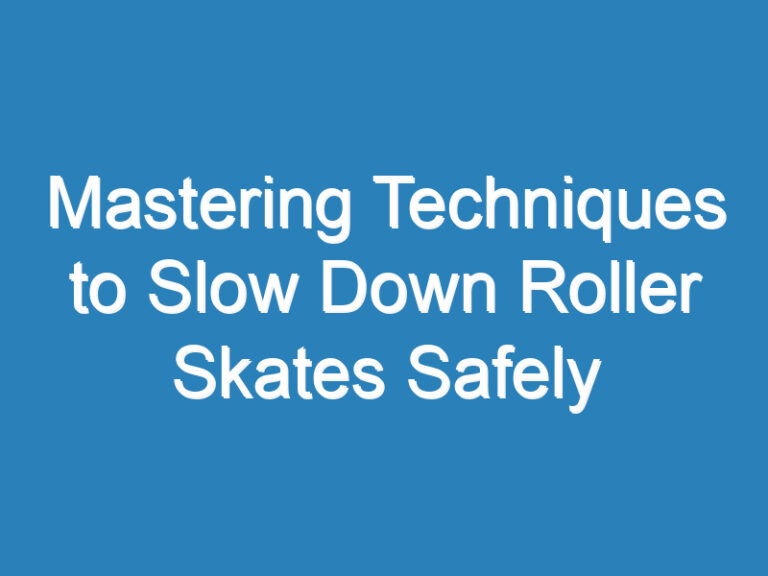
Are you ready to take your skate skiing to the next level? In this article, I’ll share my top tips on how to conquer those challenging uphill sections with confidence.
When it comes to skate skiing uphill, technique is key. I’ll break down the essential skills you need to master to glide effortlessly up those inclines.
Key Takeaways
- Choosing the right equipment is crucial for optimal performance uphill. Consider factors such as skis, boots, bindings, and poles.
- Mastering the double poling technique is essential for efficiency and power when skate skiing uphill. Focus on proper positioning, timing, full range of motion, regular practice, video analysis, and seeking professional guidance.
- Utilizing the edging technique helps maintain control and stability on slopes. Shift weight, pressure the inside edge of the ski, focus on body alignment, practice drills, and use short, quick edge-to-edge movements for efficiency.
- Building strength and endurance through core engagement, cardio, strength training, and technique refinement is key to improving performance and conquering challenging terrain.
- Practice uphill skiing drills focusing on double poling and V2 technique to enhance upper body strength, power, momentum, glide, and energy conservation for smoother transitions and improved proficiency.
Choosing the Right Equipment
When skate skiing uphill, having the right equipment is essential for optimal performance. Here are some key factors to consider when selecting your gear:
- Skis: Opt for shorter skis for better maneuverability on uphill terrain.
- Boots: Look for lightweight boots with good ankle support to aid in efficient movement.
- Bindings: Choose bindings that provide stability and control, especially when climbing steep inclines.
- Poles: Select poles that are the right length for your height to help propel you forward effectively.
By investing in high-quality and properly fitting equipment, you can enhance your skate skiing experience and tackle uphill challenges with confidence.
Mastering the Double Poling Technique
When skate skiing uphill, mastering the double poling technique is essential for maximum efficiency and power. Here are some tips to help you improve your double poling skills:
- Proper Positioning: Ensure your body is centered and balanced over your skis. Keep your core engaged and arms angled slightly forward.
- Timing is Key: Coordinate your pole plants with your leg push-offs to generate maximum propulsion. Focus on timing and explosive power.
- Full Range of Motion: Utilize a full range of motion with your arms to generate power from your core and upper body. Aim for long and powerful strokes.
- Practice Regularly: Like any skill, mastering double poling takes practice. Dedicate time to drills and exercises that focus on technique and strength.
- Video Analysis: Consider recording yourself while double poling to analyze your technique. Look for areas of improvement and make necessary adjustments.
- Seek Professional Guidance: If you’re struggling to improve your double poling technique, consider seeking guidance from a coach or instructor. They can provide personalized feedback and tips tailored to your specific needs.
By focusing on mastering the double poling technique, you can enhance your skate skiing performance on challenging uphill sections and tackle steep inclines with confidence and efficiency.
Utilizing the Edging Technique
When skate skiing uphill, Utilizing the Edging Technique is crucial for maintaining control and stability on slopes. Here are some key points to keep in mind:
- Edging involves shifting your weight and pressuring the inside edge of the ski to carve the snow.
- By engaging the edges of your skis, you can improve grip and maneuverability on uneven terrain.
- Focus on proper body alignment to maximize the effectiveness of edging while going uphill.
- Practice edging drills to enhance your technique and build confidence in varying conditions.
- Incorporating short, quick edge-to-edge movements can help you navigate tight turns and steep sections more efficiently.
Mastering the edging technique is essential for conquering challenging uphill terrain and enhancing your overall skate skiing performance.
Building Strength and Endurance
When it comes to skate skiing uphill, building strength and endurance is key to improving performance. As I tackle challenging terrain, I focus on utilizing my core muscles to stabilize my body and maintain balance. Engaging the core not only enhances control but also helps propel me forward efficiently.
Training plays a crucial role in developing the required stamina for uphill skate skiing. I incorporate cardio exercises such as running, cycling, and interval training to boost my endurance levels. Additionally, I include strength training routines to target leg muscles, which are vital for powering through inclines.
To enhance my skate skiing uphill abilities, I also work on improving my technique. By refining my edging skills and mastering efficient weight transfer, I can glide smoothly and swiftly up slopes. Practicing these techniques regularly not only enhances my performance but also reduces the risk of injuries on challenging terrain.
Incorporating interval training sessions into my routine helps simulate the intensity of uphill climbs, preparing my body for the demands of steep slopes. These high-intensity bursts followed by recovery periods help build both strength and endurance, making uphill skate skiing more manageable and enjoyable.
By focusing on building strength, improving technique, and incorporating targeted training, I continue to enhance my performance and conquer even the most daunting uphill terrains.
Practicing Uphill Skiing Drills
When it comes to improving uphill skate skiing performance, incorporating specific drills into your training routine can make a significant difference. Here’s how I recommend you approach practicing uphill skiing drills:
- Focus on double poling: Integrate double poling drills into your workout regimen to enhance upper body strength and power, crucial for propelling yourself uphill efficiently.
- Work on V2 technique: Practicing the V2 technique can help you maintain momentum and glide on uphill sections, enabling smoother transitions and conserving energy.
Engaging in these key drills regularly can elevate your skate skiing abilities and prepare you for tackling challenging ascents with confidence and proficiency.
Conclusion
Mastering uphill skate skiing requires dedication and practice. By focusing on drills like double poling and the V2 technique, skiers can enhance their strength and efficiency on uphill terrains. Consistent training in these areas will lead to improved performance and confidence when facing challenging ascents. Remember, progress takes time, so stay committed to your training regimen and embrace the journey of becoming a skilled uphill skate skier. With determination and perseverance, you’ll conquer those uphill slopes with ease. Happy skiing!
Frequently Asked Questions
1. Why is double poling important for uphill skate skiing?
Double poling is crucial for improving upper body strength and power, essential for efficient uphill propulsion in skate skiing.
2. What is the V2 technique in skate skiing?
The V2 technique involves a specific skiing maneuver for maintaining momentum and conserving energy on uphill sections.
3. How can practicing specific drills enhance skate skiing abilities?
Engaging in regular drills like double poling and mastering the V2 technique can elevate skate skiing abilities, preparing individuals for challenging ascents.

Hi, This is Roasalin, I have loved Skating since my early childhood days, and here I share my experiences and tips for beginners who want to turn into pro skaters. I hope you find it useful. you can contact me here






